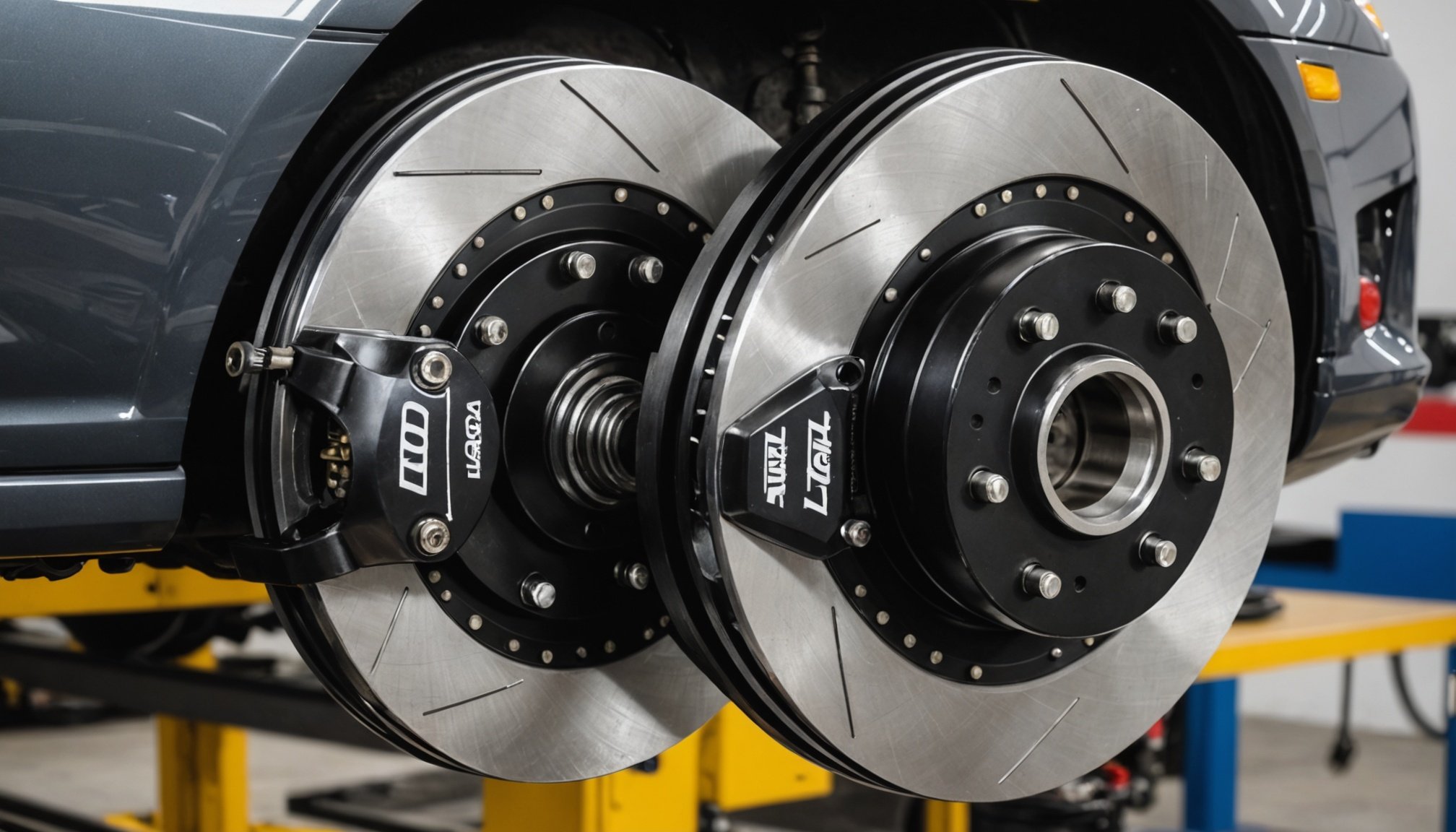Understanding Brake Calipers and Their Importance
Brake calipers play a crucial role in a vehicle’s braking system by holding the brake pads against the rotors. When you press the brake pedal, calipers squeeze these pads to create the friction necessary for stopping the vehicle. This process highlights the importance of high-quality brake calipers, as they significantly influence overall vehicle performance. Quality calipers ensure that stopping distances are minimised, providing better safety and control.
Worn-out calipers, on the other hand, can severely affect braking efficiency. Such calipers may cause uneven pad wear, leading to reduced stopping power. Moreover, they can lead to increased heat build-up, causing brake fade and ultimately compromising safety. Performance upgrades, such as investing in superior calipers, can address these issues.
Also to read : Unlocking Tesla Model S Air Suspension Secrets: Pro Tips for Ultimate Comfort and Superior Control
Performance upgrades often incorporate innovations like multi-piston designs which distribute pressure more evenly. This is particularly beneficial for high-performance scenarios where consistent and reliable braking is paramount. Upgrading to high-performance calipers can also improve heat dissipation, reducing the risk of brake fade during repeated heavy braking. Replacing worn-out calipers with high-quality options revives the responsiveness and safety of your braking system.
Types of Brake Calipers for Toyota Celica
Understanding the different types of brake calipers is essential for Toyota Celica enthusiasts seeking optimal performance. Brake calipers fall into two primary categories: fixed and floating calipers. Fixed calipers, boasting multiple pistons on either side of the rotor, offer consistent, powerful braking, ideal for performance driving. In contrast, floating calipers have pistons only on one side, sliding along a track to engage the brake pad on the opposite side, which makes them cost-effective and simple to maintain but typically less responsive in high-demand conditions.
Also read : Ultimate Camaro SS Upgrade: High-Performance Camshaft Installation for Superior Valve Timing
When comparing performance calipers for the Toyota Celica, aftermarket options like Brembo or Wilwood stand out due to their advanced engineering and reliable performance. These brands often feature multi-piston designs, ensuring even pressure distribution and reduced brake fade, highly desirable in performance scenarios.
On the other hand, OEM caliper choices provide balance through design and compatibility directly from Toyota, ensuring seamless integration with existing systems.
Choosing between OEM and aftermarket calipers involves assessing driving needs, budget, and performance goals. Each choice delivers distinct advantages, thus highlighting the importance of considering car usage scenarios and desired braking precision.
Benefits of Upgrading to Performance Brake Calipers
Upgrading to performance brake calipers can significantly enhance your vehicle’s braking ability. One of the primary benefits is improved stopping power, resulting in reduced stopping distances. This enhancement is crucial for safety, especially in high-speed or emergency situations where every metre counts.
Moreover, performance calipers are designed to offer superior heat dissipation, a vital feature during intense driving conditions such as track days or spirited driving. Better heat dissipation helps maintain braking performance by preventing brake fade, where brakes become less effective due to overheating.
Investing in these enhanced braking systems also bolsters the vehicle’s control and responsiveness. This means drivers can feel more connected to their cars, confidently manoeuvring through varied road conditions. The stability offered by upgraded calipers helps maintain composure during sharp turns or sudden stops.
Performance upgrades don’t just contribute to handling and safety—they also offer long-term reliability. Robust materials and advanced designs ensure that the calipers withstand rigorous use, providing consistent performance across different driving scenarios. For drivers valuing both safety and performance, these upgrades are a compelling choice.
Installation Guide for Front Brake Caliper Upgrades
Upgrading front brake calipers can enhance vehicle performance and safety effectively. The process requires specific tools and a methodical approach to ensure success. Here’s a concise installation guide to aid enthusiasts in this DIY endeavour.
Tools Required for Installation
Before starting, gather essential tools to streamline the process. You will need:
- A socket wrench set
- Torque wrench
- Brake caliper tool kit
- Jack and jack stands
- Brake fluid and a bleeder kit
Having these tools ready will facilitate a smoother installation experience.
Step-by-Step Installation Process
-
Secure the Vehicle: Use the jack stands to safely elevate your vehicle, ensuring it’s stable.
-
Remove the Wheel: Loosen the lug nuts and take off the wheel to access the brake calipers.
-
Detach Existing Calipers: Carefully unscrew the caliper bolts using a socket wrench, then remove the caliper.
-
Install New Calipers: Position the new caliper and secure it with bolts, tightening them according to the manufacturer’s specifications using a torque wrench.
-
Bleed the Brakes: After installation, use the bleeder kit to remove air from the brake lines for optimum performance.
Following this precise process ensures that the new calipers function correctly, enhancing your vehicle’s braking efficiency and safety.
Compatibility and Cost Analysis
For Toyota Celica owners, assessing brake caliper compatibility is crucial when considering upgrades. Ensuring that new calipers fit seamlessly is key to achieving optimal braking performance. Compatibility issues can lead to inefficient braking and may compromise safety. Always cross-reference specifications with your vehicle manual to prevent mishaps.
Addressing the financial aspect, a comprehensive cost analysis helps in making well-rounded decisions. Upfront costs of performance calipers can be significant, including considerations for installation. Yet, evaluating long-term savings versus these initial expenses is essential. Performance upgrades often result in reduced wear and maintenance over time, potentially offsetting their higher initial cost.
Prices can vary widely based on brand and specification. OEM calipers provide a standard level of performance at a relatively lower cost, compared to premium aftermarket calipers which often justify their price with advanced features. When balancing budget considerations with performance goals, remember that quality often correlates with durability, ensuring cost-effective maintenance in the long run. Emphasising both compatibility and cost helps ensure a successful and economically sound upgrade, contributing to improved vehicle safety and performance.
Safety Considerations and Maintenance Tips
Ensuring brake safety and effective maintenance of brake calipers is crucial for optimal performance. Regular maintenance tips and caliper care involve a few systematic actions. First, examine brake pads and rotors routinely for signs of wear. Monitoring these components can prevent unforeseen failure and maintain the brake system’s integrity.
Regular Maintenance Practices
Conduct consistent inspections every 10,000 miles or as recommended by your vehicle’s manual. Clean brake calipers with a non-corrosive cleaner to avoid dirt accumulation affecting performance.
Identifying Wear and Tear Signs
Familiarising oneself with indicators of deterioration aids in preemptively addressing issues. Brake safety can be compromised by symptoms like a spongy pedal, longer stopping distances, or visible cracks. Look for uneven pad wear which can suggest caliper malfunction.
Safe Driving Practices Post-Upgrade
Adapting to the enhanced braking system following upgrades safeguards vehicle control. Begin with gentle applications of the brake pedal, gradually increasing intensity to familiarise yourself with the new sensitivity. Understanding these practices not only bolsters braking performance but also prolongs component lifespan, ensuring consistent vehicle safety and reliability.
User Testimonials and Experiences
Engaging with user reviews and testimonials offers valuable insights for anybody considering caliper upgrades. Owner narratives often highlight performance shifts that occur with new brake calipers, shedding light on real-world effects. For instance, many users report significant improvements in enhanced braking precision, leading to better handling and reduced stopping distances. These insights are critical for understanding the nuances beyond technical specifications.
Community feedback frequently emphasises the importance of meticulously choosing between OEM and aftermarket calipers. Some users underscore the exceptional consistency and reliability gained through performance calipers, while others cite the dependable compatibility of OEM options with existing brake systems. Additionally, varied experiences with installation processes enhance troubleshooting awareness, with fellow enthusiasts offering firsthand tips.
A consensus reflects that prioritising high-quality materials and engineering, even at a higher cost, often yields longevity and safer driving experiences. This highlights how user-driven evaluations inform decisions, helping potential buyers align their choices with desired performance outcomes. Engaging in these collective insights fosters informed decision-making, tailoring upgrades to match specific driving needs and safety preferences.






